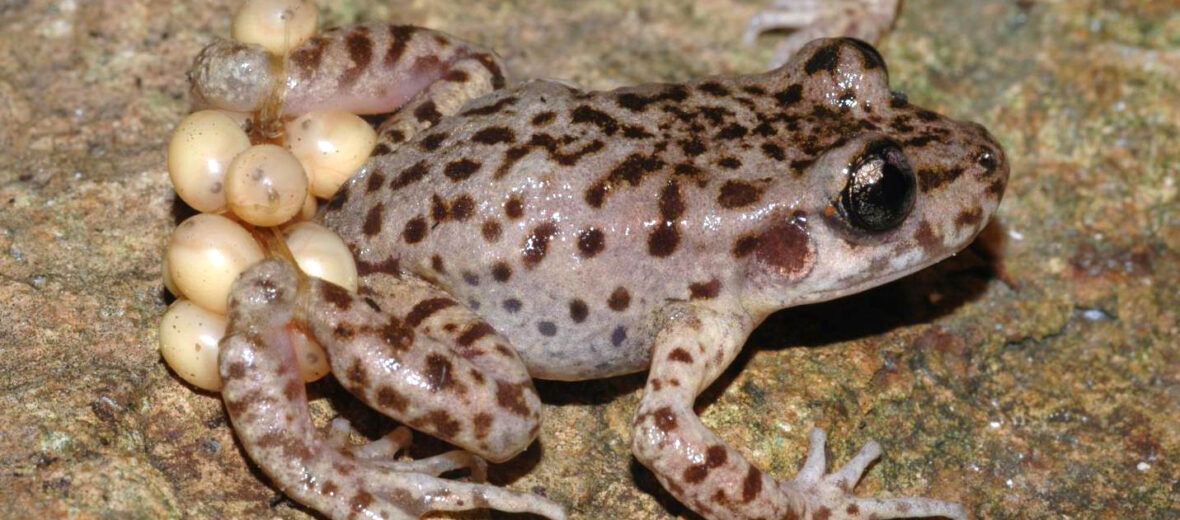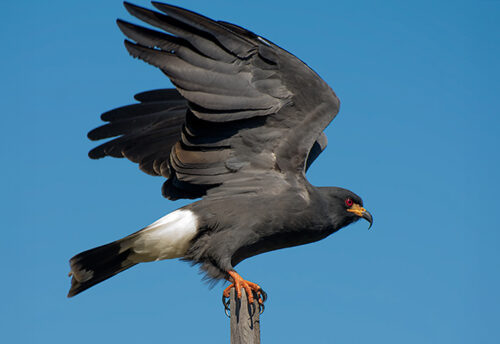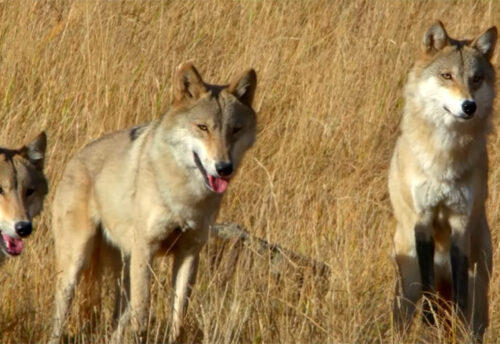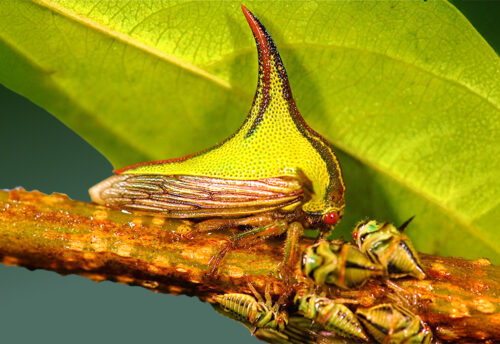
The Majorcan midwife toad, aka ferreret or Mallorcan midwife toad, hails only from the mountainous regions and gorges of the Serra de Tramuntana, in Balearic Island of Majorca in the Mediterranean Sea. They prefer streams in limestone caverns that provide an abundance of stones to hide under. Unfortunately, due to habitat destruction and loss at the hands of residential and commercial developments, and dams; intrusions from recreational activities; invasive species (and with them disease, predation, and competition for food); and climate change (resulting in droughts), these little toads are listed as Endangered by the IUCN. However, their populations are actually increasing from the last survey in 2020.
First the Stats…
Scientific name: Alytes muletensis
Weight: Less than 1 ounce
Length: Up to .20 inch
Lifespan: Up to 10+ years
Now on to the Facts!
1.) As an example of Lazarus taxon (a taxon that disappears for 1 or more periods from fossil records, only to appear again later), these toads were first discovered in 1977 from fossil records and formally classified in 1979 from live specimens.
2.) Fortunately, these toads breed readily in captivity. So, this makes for easier reintroduction into the wild.
3.) Just as is the case with all midwife toads, the male of the species carries the developing eggs. These particular toads watch over their eggs during the months of May and June.
4.) In another strange turn of events, the females will grapple and fight to win breeding rights with a male.
5.) The Majorcan midwife toad is protected as a Majorcan endemic species.
But wait, there’s more on the Majorcan midwife toad!
6.) The introduction of the non-native viperine snake has cause havoc within the wild populations with some sites experiencing up to a 90% decline in specimens.
7.) Competition for living space with the introduced Perez’s Frog also has had its pitfalls as well.
Did you know…?
There were only an estimated 300 – 700 +/- breeding pairs left in the wild, as of 2020.
8.) Unfortunately, the release of captive born individuals has come at a cost. Some of the released individuals contracted Batrachochytrium dendrobatidis (Bd), which causes Chytridiomycosis (the lethal Chytrid fungus) in existing wild populations.
9.) The females lay up to just 12 eggs that are then guarded by the male till they hatch.
10.) When the eggs are ready to hatch, the male takes them to the water so the tadpoles can develop into toadlets.
Now a Short Majorcan Midwife Toad Video!
Be sure to share & comment below! Also, check out the Critter Science YouTube channel. Videos added regularly!
Want to suggest a critter for me to write about? Let me know here.
Some source material acquired from: Wikipedia & IUCN
Photo credit: Jaime Bosch MNCN-CSIC



